Understanding MRI Machine Pricing Dynamics
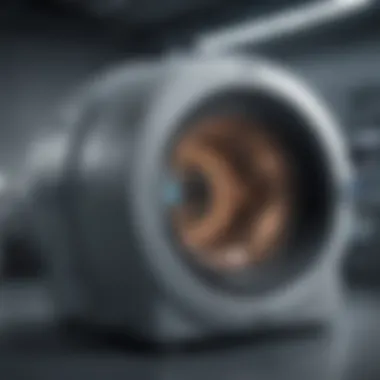
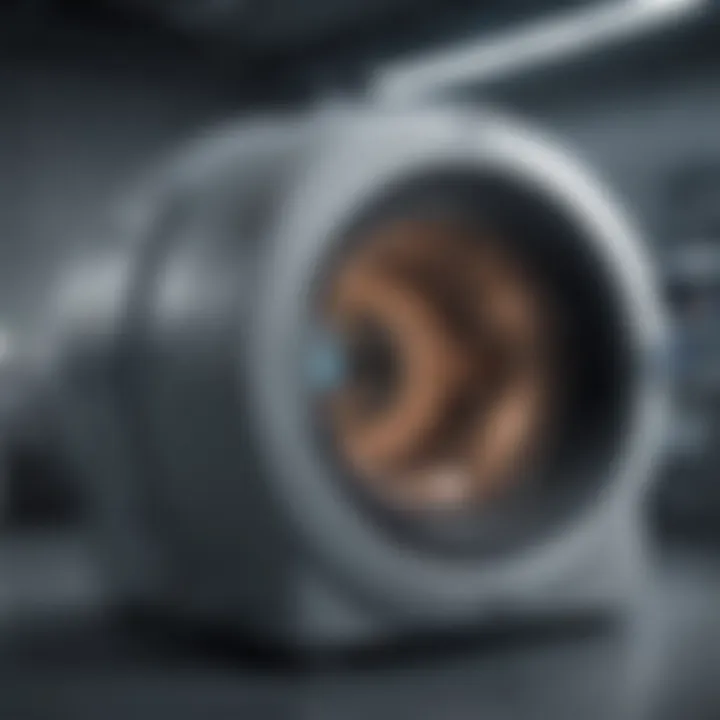
Overview of Research Topic
Brief Background and Context
Magnetic Resonance Imaging (MRI) technology has revolutionized medical imaging since its inception. MRI machines are crucial for diagnosing a variety of health conditions, guiding treatment plans, and monitoring patient progress. However, the high costs associated with acquiring and maintaining these machines can pose significant challenges for healthcare facilities. Understanding the financial implications of MRI machines becomes essential, not just for budgeting purposes but also for ensuring equitable patient care.
Importance in Current Scientific Landscape
The pricing of MRI machines is influenced by multiple factors, including technological advancements, manufacturing costs, and overall demand within the healthcare sector. In today's landscape, where healthcare budgets are continually scrutinized, exploring these factors sheds light on how MRI costs can affect patient access to vital diagnostic services. A comprehensive grasp of the cost elements associated with MRI machines holds significant relevance for students, researchers, and healthcare professionals as they navigate the complex dynamics of medical technology expenditure.
Methodology
Research Design and Approach
This article utilizes a qualitative approach to gather insights into the factors affecting the cost of MRI machines. A review of existing literature, including case studies and market analyses, forms the backbone of this research. Engaging with industry experts provides real-world perspectives that enhance the depth of the analysis.
Data Collection Techniques
Data sources include academic journals, government reports, and industry publications. Engaging with healthcare facility management professionals contributes additional context to the financial decision-making processes. Surveying various healthcare facilities regarding their experiences with purchasing MRI machines offers direct data on pricing variations and financing options. This multi-faceted approach ensures a well-rounded understanding of the complexities driving MRI machine costs.
Understanding the economic factors that influence MRI pricing helps stakeholders make informed decisions about technology investments, ultimately shaping patient care outcomes.
Intro to MRI Machines
Magnetic Resonance Imaging (MRI) has become an indispensable tool in medical diagnostics. Understanding the importance of MRI machines extends beyond mere comprehension of imaging technology. In this context, we delve into why MRI machines are vital for patient care and the intricacies behind their pricing.
MRI machines are essential for detecting and diagnosing a multitude of conditions such as tumors, brain disorders, and joint injuries. This modality allows healthcare providers to visualize internal structures without radiation exposure, presenting a considerable advantage over traditional X-rays or CT scans.
However, the high cost of acquiring MRI machines can be a significant barrier for many healthcare facilities. Therefore, understanding the monetary implications is crucial for decision-makers in the healthcare sector. Factors that influence pricing, such as technological specifications, vendor reputation, and market demand, need careful consideration.
Ultimately, a thorough examination of the cost of MRI machines enriches our perspective on healthcare budgets. It also informs stakeholders about potential financial strategies to optimize operations. Thus, this section aims to contribute to a well-rounded understanding of MRI machines and the economic considerations that come with them.
Overview of MRI Technology
MRI technology harnesses the power of strong magnetic fields and radio waves to create detailed images of organs and tissues. The fundamental principle relies on the alignment of hydrogen atoms in the body. When exposed to a strong magnetic field, these atoms align in a specific direction. Subsequently, radiofrequency pulses disrupt this alignment, causing the atoms to emit signals as they return to their original position. These signals are detected and transformed into images by a computer.
The high-resolution images produced by MRI are crucial for accurate diagnosis. Unlike other imaging modalities, MRI is especially effective at visualizing soft tissues, making it invaluable in neurology, orthopedics, and oncology.
Despite its numerous benefits, MRI technology has its limitations. For instance, metal implants can interfere with imaging quality. Moreover, the duration of scans can be an obstacle for some patients. Understanding these technical aspects provides a clearer picture of the advantages and limitations of MRI machines within a healthcare setting.
Price Range of MRI Machines
The price range of MRI machines is crucial for several reasons. Understanding these prices not only helps healthcare facilities budget effectively, but it also impacts how patients receive care. MRI machines can be a significant investment, leading facilities to weigh costs against the potential return in diagnostic accuracy and patient outcomes. The wide variation in price reflects differences in technology, features, and the machine's intended use.
Average Cost of New MRI Machines
New MRI machines typically range from $150,000 to $3 million. The price depends on several factors, including the machine's type, technology level, and features. High-field closed MRI systems, for instance, are at the higher end of this scale due to their advanced imaging capabilities. Conversely, open MRI machines are generally less expensive, costing between $100,000 and $1.5 million.
Various brands also influence pricing. Established manufacturers like Siemens, GE Healthcare, and Philips often price their advanced units at a premium. Factors like warranty, after-sales service, and machine maintenance also play a critical role in determining the final cost. Facilities need to analyze how the specifications of a new MRI machine can meet their operational needs while also aligning with their budget.
Used MRI Machines: Costs and Considerations
Lowering costs, healthcare facilities often consider purchasing used MRI machines. The price for these units can range from $30,000 to $1 million, depending on the machine's age, condition, and technology. While it can be a more economical option, buying used machines necessitates a thorough evaluation of their operational status and potential repair needs. As technology in the medical field evolves rapidly, older models may lack some features present in newer devices.
When considering a used MRI machine, healthcare facilities should factor in:
- Maintenance History: Whether the machine has been well maintained or if it has had significant repairs.
- Original Specifications: Understanding how the model stacks against newer machines.
- Availability of Parts: Ensuring that replacement parts can still be procured easily.
- Regulatory Compliance: Checking if the machine meets current health regulations.
Factors Influencing MRI Pricing
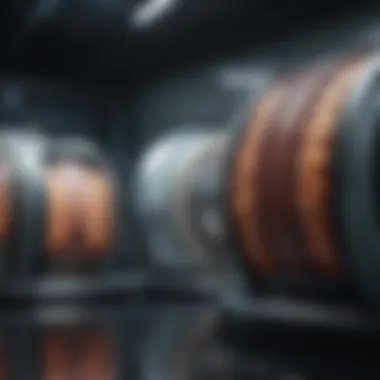

The pricing of MRI machines is not just a number; it encapsulates a multitude of elements that dictate both the acquisition cost and ongoing expenses associated with these essential medical devices. Various factors come into play, and understanding them is crucial for any healthcare facility assessing its imaging needs and capabilities. Factors influencing pricing can drastically affect budgeting decisions, operational effectiveness, and ultimately patient care.
Technical Specifications and Features
The technical specifications and features of MRI machines are fundamental in determining their price. Machines with higher magnetic strengths, specifically those between 1.5 Tesla and 3.0 Tesla, often come at a premium. These machines can produce sharper images and have better diagnostic capabilities than lower-strength models. Advanced features such as multi-channel coils, faster scanning capabilities, and software for post-processing also contribute to increased costs.
Healthcare facilities must evaluate their requirements carefully. A high-end machine with cutting-edge technology may not be necessary for all practices. Institutions that predominantly perform basic scans may opt for cost-effective machines, even if that means forgoing certain advanced features.
Manufacturer Reputation
The manufacturer of an MRI machine plays a significant role in its price point. Established brands like Siemens, GE Healthcare, and Philips are known for their quality and reliability. These manufacturers invest heavily in research and development, ensuring that their machines meet rigorous safety standards and technical specifications. This dedication often translates into higher prices when compared to lesser-known brands.
However, a reputable manufacturer also offers long-term benefits. With better service support, warranties, and potentially more reliable machines, the initial investment could lead to savings over time. Thus, purchasing from a reputable manufacturer can be viewed as a strategic investment for many healthcare facilities.
Market Demand and Competition
Market demand deeply influences the pricing of MRI machines. In regions where healthcare facilities are expanding and heavy investments in imaging technology occur, prices tend to rise due to increased competition among suppliers. Alternatively, areas with fewer buyers may face lower prices simply due to reduced demand.
Global events can also create fluctuations in pricing. For instance, during a health crisis or pandemic, the need for diagnostic imaging may increase, leading to higher prices. Conversely, when there is a surplus of machines in the market, competition can drive prices down. Understanding these dynamics is essential for making informed purchasing decisions.
In summary, factors such as technical specifications, manufacturer reputation, and market demand are critical to understanding MRI machine pricing. Each facility's unique circumstances will influence which elements weigh the most heavily in their purchasing decision.
Types of MRI Machines and Their Costs
The examination of various types of MRI machines is crucial in understanding their associated costs. Different types of MRI machines cater to distinct patient needs, scanning requirements, and operational environments. Each type has a unique pricing structure influenced by its technology, size, and features. By recognizing the differences in MRI machines, healthcare facilities can make informed decisions that fit their budget constraints while ensuring optimal patient care.
Closed MRI Machines
Closed MRI machines are perhaps the most common type found in medical facilities today. These machines consist of a large tube shaped magnet that creates a strong magnetic field. Patients must lie down and slide into the tube for the imaging process, which can be intimidating for those with claustrophobia.
The costs of closed MRI machines vary significantly based on their specifications. New systems generally range from about $1 million to over $3 million. Factors affecting the price include:
- Magnetic strength: Systems with higher Tesla ratings provide better image quality.
- Upgrades: Manufacturers offer various upgrades, impacting costs.
- Service Contracts: Ongoing maintenance agreements can lead to additional costs.
Despite their higher price, closed MRI machines often provide superior imaging and are commonly utilized for diagnostic procedures such as identifying tumors or detecting abnormalities in soft tissues.
Open MRI Machines
Open MRI machines provide an alternative to those who might feel uncomfortable in the enclosed space of a traditional closed MRI. An open design ensures that patients do not feel confined. However, this design often comes with a trade-off in image quality and scanning speed.
The price for open MRI machines typically falls between $800,000 and $1.5 million. Some of the included cost considerations are:
- Imaging Capability: Open MRIs generally have lower magnetic strength than closed types.
- Patient Comfort: Facilities may opt for open systems to accommodate patients with anxiety or claustrophobia.
- Operational Costs: Often, open MRIs require more time for scans, impacting patient throughput and operational efficiency.
Open MRIs can be beneficial for specific populations, such as pediatrics or patients with mobility issues, establishing their valuable niche in imaging technology.
Functional MRI Machines
Functional MRI (fMRI) machines are specialized systems designed to observe brain activity. The fMRI technique evaluates changes in blood flow in the brain, making it an essential tool in both research and clinical settings.
The pricing for functional MRI machines ranges from $1.5 million to over $5 million depending on technological advancements and added components. Important aspects influencing costs include:
- Technology Level: Advanced systems with superior imaging capabilities can significantly increase prices.
- Data Analysis Software: fMRI studies often rely on complex algorithms to assess brain function. The associated software adds to the overall investment.
- Training Programs: Properly trained staff are necessary to operate and interpret fMRI data, adding further costs.
In summary, functional MRI machines play a critical role in neuroscientific research and are becoming more significant in clinical applications. Their high costs reflect the value and advanced technology that they offer.
Understanding the types of MRI machines and their costs is essential for healthcare facilities aiming to optimize resources while ensuring high-quality patient diagnostics.
Financing Options for MRI Purchases
Financing options play a crucial role in determining how healthcare facilities acquire MRI machines. Understanding these options helps stakeholders to make informed decisions in a market where costs can be significant. The financial strategy adopted can affect a facility’s overall budget, cash flow, and even its ability to provide quality patient care. Thus, exploring various financing methods is paramount for healthcare administrators.
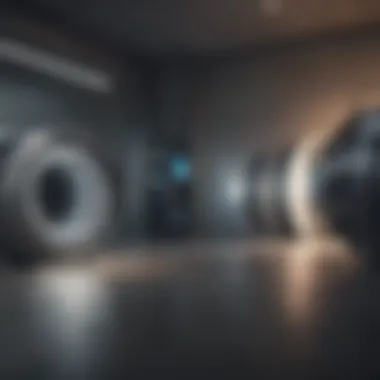
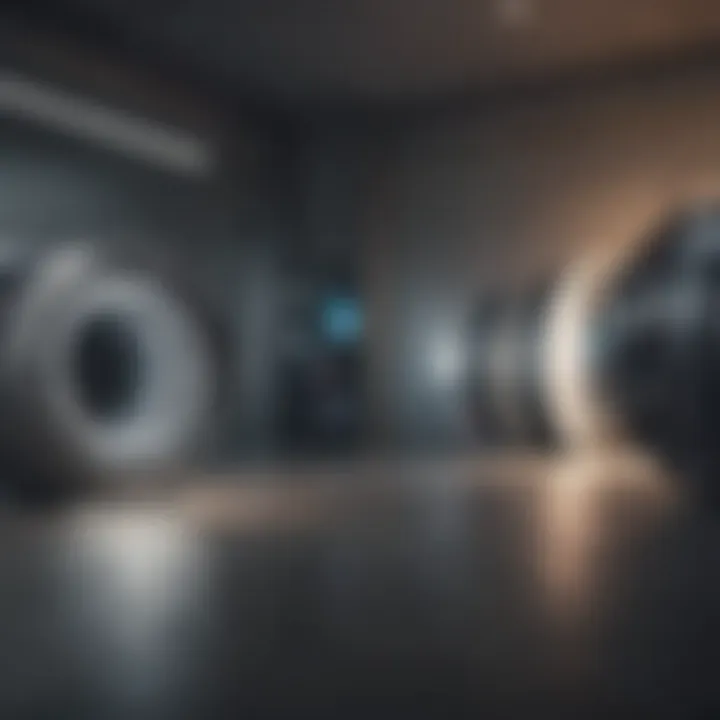
Leasing vs. Buying: Financial Implications
When it comes to financing MRI machines, healthcare facilities generally analyze two primary options: leasing and buying. Each of these methods has its distinct financial implications that can influence the decision-making process.
- Leasing:
- Buying:
- This option allows a facility to use an MRI machine without the high upfront costs associated with purchasing outright. It often includes maintenance in the lease agreement, reducing unexpected operational costs.
- Leasing generally requires lower initial capital expenditure, freeing up funds for other critical areas, like staffing or medical supplies.
- On the downside, total costs can accumulate over time, potentially leading to higher overall expenditure compared to outright purchase.
- Purchasing offers full ownership, which means complete control over the equipment. It can be more cost-effective in the long term, especially if the machine has a long useful life.
- However, the initial price tag is considerably higher, impacting short-term financial flexibility.
- There are also additional costs related to maintenance, upgrades, and training, which must be factored in.
Choosing between leasing and buying depends on various factors, including financial health, expected usage, and long-term goals of the facility.
Financing Through Medical Equipment Loans
Medical equipment loans represent another viable option for acquiring MRI machines. These loans enable healthcare facilities to borrow a set amount to finance the purchase of MRI machines while spreading the repayment over a defined period.
"Medical equipment loans are tailored to the specific needs of healthcare providers, making them an attractive option for many."
- Targeted Use: Equipment loans are designed specifically for purchasing medical equipment, often featuring favorable terms, such as lower interest rates compared to others loans.
- Flexibility: Repayment schedules can often be adjusted to align with cash flow needs, allowing facilities the breathing room they need.
- Ownership Benefits: Once the loan is paid off, facilities own the machine outright, eliminating ongoing payments and providing long-term value.
Despite the benefits, facilities must carefully consider their repayment ability and overall financial strategy. Broadly speaking, financing through loans can enable healthcare facilities to acquire state-of-the-art imaging technology while managing fiscal responsibilities effectively.
Impact of MRI Costs on Healthcare Facilities
The cost of MRI machines plays a significant role in the operational and financial planning of healthcare facilities. As these machines represent a considerable investment, understanding their costs is crucial for budgeting and resource allocation. Facilities must consider not just the purchase price but also ongoing maintenance and operational expenses. With healthcare budgets under constant scrutiny, the financial implications of acquiring MRI technology cannot be understated.
Additionally, MRI costs impact the extent of services a healthcare facility can offer. Facilities with limited budgets may face constraints in purchasing new or advanced MRI machines, which can lead to reduced diagnostic capabilities. Furthermore, healthcare providers need to assess the competitive landscape. Facilities that offer more advanced imaging services can attract patients, directly affecting their financial viability.
In this section, we will examine two main aspects: budgeting for MRI acquisition and maintenance, and the cost-benefit analysis of incorporating MRI machines into healthcare practices.
Budgeting for MRI Acquisition and Maintenance
Budgeting for MRI acquisition and maintenance is a multifaceted process. First, healthcare facilities must establish a realistic budget that accounts for the initial purchase price. The cost varies widely depending on the type and specifications of the machine. For example, new closed MRI machines can range from $1 million to $3 million, while used ones could be significantly less expensive, but careful evaluation is necessary to avoid costly repairs.
Operating costs also play a crucial role in the overall budget. These include:
- Maintenance Costs: Regular maintenance is needed to keep the machinery functioning properly. This can include contracts with service providers, which can cost tens of thousands annually.
- Operating Expenses: Costs related to staffing, training, and the everyday operation of MRI machines must also be factored in. These ongoing expenses can accumulate and impact a facility's profitability.
- Upgrades and Repairs: As MRI technology advances, older machines may require upgrades or may even become obsolete. Investment in upgrades can be substantial but necessary to maintain competitive service.
Effective budgeting involves a comprehensive analysis of all these components, ensuring that healthcare facilities can not only afford the machine but also sustain its operation.
Cost-Benefit Analysis of MRI Machines
When evaluating the acquisition of MRI machines, a thorough cost-benefit analysis is imperative. This analysis helps facilities to make informed decisions based on financial justification and potential returns on investment.
Some key considerations for this analysis include:
- Revenue Generation: MRI services can significantly contribute to a facility's overall revenue stream. Facilities must assess the expected demand for MRI services within their patient population to determine potential income from this technology.
- Patient Outcomes: Advanced imaging capabilities can improve diagnostic accuracy and, consequently, patient outcomes. This may enhance the reputation of the facility, leading to increased patient referrals and trust in the healthcare system.
- Operational Efficiency: Investing in modern MRI technology often results in improved workflows and faster turnaround times for diagnostics. This efficiency can create capacity for handling more patients, again affecting profitability positively.
"A facility's ability to offer comprehensive imaging services correlates directly with its competitive positioning and financial health."
Regulatory Considerations for MRI Pricing
Understanding the regulatory landscape surrounding MRI pricing is essential for both healthcare facilities and patients. Regulations play a critical role in determining the costs and accessibility of MRI machines. Compliance with health regulations ensures that MRI equipment meets safety standards. It also influences the overall pricing structures within the healthcare system. Regulatory bodies establish guidelines that manufacturers and healthcare providers must adhere to, which affects how MRI machines are priced in the market.
Moreover, these regulations can benefit patients by ensuring that the quality of care remains high. Non-compliance can lead to financial penalties for facilities and may adversely impact patient outcomes. Therefore, understanding these regulations is crucial for making informed decisions regarding MRI investments.
Compliance with Health Regulations
Compliance with health regulations is not just a legal obligation but a pivotal aspect of the healthcare industry. For MRI machines, several regulations from the Food and Drug Administration (FDA) and other authoritative bodies dictate the quality and safety standards that manufacturers must fulfill.


Facilities must regularly verify that their MRI machines adhere to these standards. This compliance can affect the overall acquisition costs. Facilities that do not meet regulatory requirements can face significant fines and potential loss of operating licenses.
Key Points of Compliance:
- Safety Standards: MRI machines must comply with safety mechanisms to protect patients and staff.
- Quality Control Protocols: Regular maintenance and calibration of MRI machines help uphold accurate imaging.
- Training Requirements: Technicians must be trained to operate MRI machines safely and effectively.
Facilities must prioritize compliance not only for legal reasons but to foster trust with patients. A reputation for safety and quality can enhance patient satisfaction, which is a crucial aspect of healthcare service.
Impact of Government Policies on Prices
Government policies can exert significant influence on the pricing of MRI machines. Policies regarding healthcare funding, reimbursement rates, and technology assessments can directly impact the costs incurred by healthcare facilities.
For instance, if reimbursements for MRI services are reduced, healthcare providers may struggle to absorb the costs associated with acquiring and maintaining MRI machines. This quandary often leads to increased prices for patients. Conversely, supportive government policies that enhance subsidies can help stabilize MRI prices, ensuring equipment remains accessible without exorbitant costs.
Examples of Government Impact:
- Reimbursement Rates: Changes in Medicare or Medicaid reimbursement can prompt facilities to adjust MRI pricing.
- Subsidies for Equipment Purchase: Government grants or programs can lower the financial burden on clinics and hospitals.
- Health Technology Assessments: Government evaluations of MRI technology can affect market demand and pricing structures.
In essence, the regulatory considerations surrounding MRI pricing are multifaceted. Compliance ensures safety and quality, while government policies can dramatically affect financial dynamics within the healthcare landscape.
Understanding these elements equips stakeholders—providers, policymakers, and patients—with essential insights into the complexities of MRI machine pricing.
Future Trends in MRI Technology and Pricing
The landscape of MRI technology is in a constant state of evolution. As medical imaging is crucial for diagnosis and treatment planning, understanding future trends in MRI technology and pricing is essential for healthcare stakeholders. This section will discuss how emerging technologies may change the cost structures of MRI machines and predict future market pricing. Both elements have significant implications for healthcare facilities and patients alike.
Emerging Technologies and Their Cost Implications
Several new technologies are emerging in the field of MRI. One notable advancement is the development of more efficient magnets and coils, which can significantly enhance imaging quality. High-field MRI systems are becoming more prevalent, offering improved resolution and faster scan times. While these systems may carry higher initial costs, they can potentially reduce operational expenses over time due to quicker imaging and higher patient throughput.
In addition to traditional MRI systems, innovations like portable MRI machines are gaining attention. These devices can be used in various settings, from sports facilities to remote hospitals. While their cost is generally higher than standard systems, the mobility factor may justify the investment for certain healthcare providers. Moreover, cloud-based imaging solutions are also emerging, allowing for easier data management and analysis. This technology may help reduce some costs associated with storage and software updates.
"The integration of new technologies in MRI not only improves diagnostic capabilities but can also optimize operational efficiency in healthcare settings."
The adoption of artificial intelligence in MRI is another trend worth noting. AI algorithms can assist in image interpretation and analysis, which may reduce labor costs and improve diagnostic accuracy. As these technologies mature, they may require considerable investments initially, but they promise substantial long-term savings and efficiency gains.
Predicted Changes in Market Pricing
Market pricing for MRI machines is poised for fluctuations based on several factors. First, the introduction of advanced technologies often leads to a higher demand for these devices. As facilities strive to offer state-of-the-art imaging services, manufacturers may respond by adjusting prices upward. This trend can make state-of-the-art machines less accessible for smaller healthcare providers unless they find effective financing options.
Conversely, as technology progresses, older models often see price reductions. This can create more opportunities for facilities with tighter budgets to acquire dependable MRI systems without investing in the latest high-cost equipment. As used MRI machines become more widely available, pricing is likely to stabilize at lower levels.
Furthermore, government policies that influence healthcare funding and reimbursement rates are set to play pivotal roles in market pricing. Changes in regulations might affect how much facilities can afford to spend on new equipment. As reimbursement rates change, health care facilities may be compelled to adapt their purchasing strategies accordingly.
In summary, as the realm of MRI technology progresses, both emerging technologies and market pricing are interlinked. The interplay between these changes can have rich implications for healthcare providers, affecting not only their operational budgets but their ability to provide high-quality patient care.
Finale
When discussing the cost of MRI machines, it is crucial to understand various elements influencing their pricing. An informed conclusion synthesizes critical insights gathered throughout the article. By evaluating average costs, specific factors that create price differences, financing methods, and the broader implications for healthcare environments, the article provides a comprehensive overview.
Key points elucidated include the significant price variations between new and used MRI machines, the role of technical specifications in determining costs, and how market dynamics can affect pricing. Each of these points highlights the complexity of the MRI market.
Healthcare stakeholders must also contemplate how MRI costs impact their operational budgets. The decision to acquire an MRI machine is not merely a transaction but rather a strategic move that shapes patient care quality and accessibility. Allegedly, varying models may necessitate different financial strategies, thus influencing long-term planning.
Overall, understanding the financial implications of MRI machines extends beyond just their costs. It is an essential consideration for the future of medical imaging and operational efficiency in the healthcare sector.
Summary of Key Points
- Variability in Costs: The price range for MRI machines varies significantly between new and used models.
- Influencing Factors: Technical features, manufacturer reputation, and market dynamics play crucial roles in dictating MRI prices.
- Financial Strategies: Healthcare facilities have options, including purchasing and leasing, impacting long-term financial health.
- Stakeholder Impact: MRI costs directly influence the quality of patient care and financial sustainability of healthcare practices.
Implications for Healthcare Stakeholders
The financial decisions surrounding MRI machines are pivotal for healthcare organizations. Higher costs may limit facilities from acquiring needed technology, which can, in turn, affect patient diagnosis and treatment.
Moreover, as more advanced technologies emerge, the market reflects evolving competition. Healthcare providers need to assess not only current needs but also future trends in medical imaging technology. The implications are substantial, suggesting a need for strategic planning to optimize resources and ensure continued delivery of superior patient care.
In summary, healthcare stakeholders should regard the costs of MRI machines not merely as expenses but as investments into the quality of care they provide. Therefore, thorough analysis and planning are necessary to align technological advancements with practical financial considerations.



